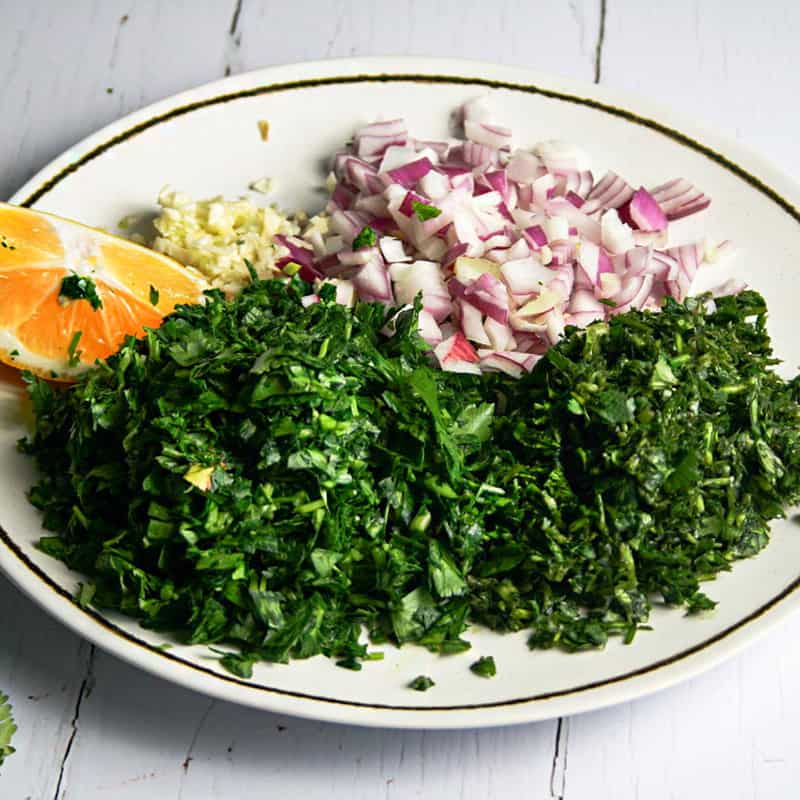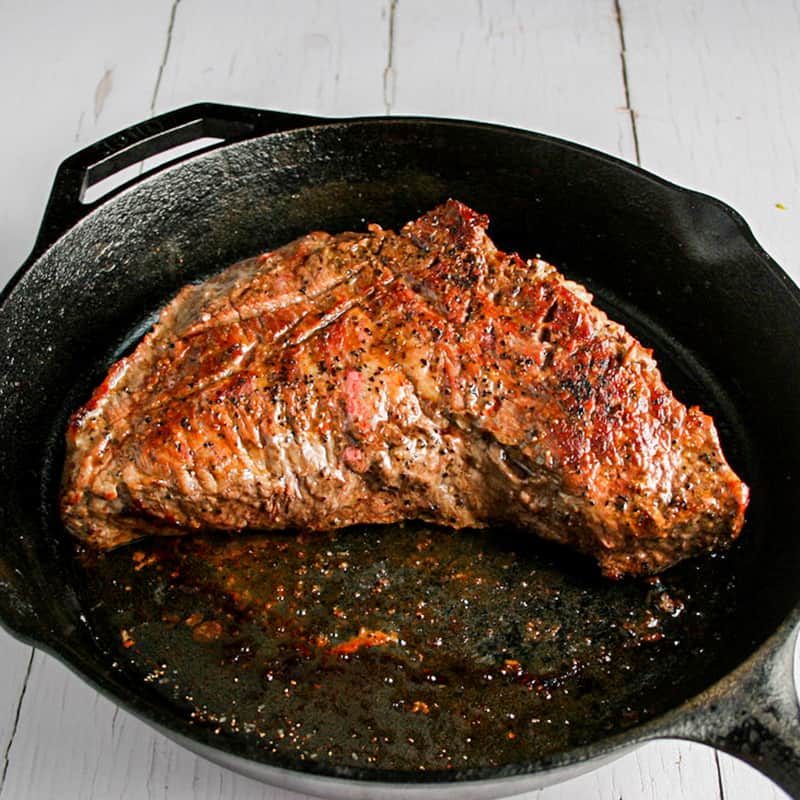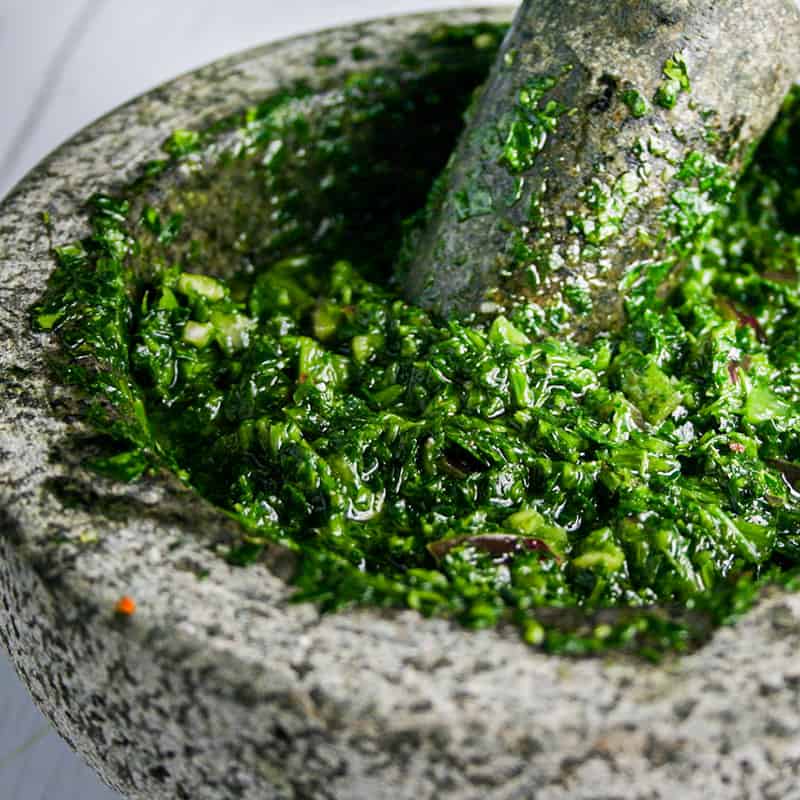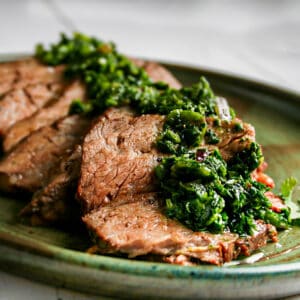Chimichurri is a Latin American classic that brings a fresh herbaceous punch to this juicy cast-iron-seared flank steak. This dish can be whipped up quickly and requires very few pans. Flank Steak with Chimichurri is a healthy dish you'll happily add to your dinner repertoire

What is chimichurri sauce
Chimichurri is an herbaceous condiment that stems from South America. It is similar to pesto, but packs a bit more of a punch. It is traditionally made with flat leaf parsley, shallot, lemon juice, garlic, olive oil, and red pepper flakes. However there are many ways to reimagine chimichurri sauce with herbs that you already have on hand. A medley of parsley, oregano, and cilantro is always delicious if you're low on parsley.


How to use chimichurri?
Chimichurri is commonly paired with steak, however it is also delicious with grilled chicken or fish. You can even serve it on a toasted baguette with your favorite soft cheese for an appetizer. The best way to serve chimichurri is to keep it in a small bowl with a spoon to help yourself. Alternatively, you can spoon it over your meat after it is cut.


Skirt Steak versus Flank Steak
Skirt and flank steaks are very similar cuts of beef and are can be used interchangeably. Both cuts have a loose grain structure that make it incredibly tender. That said, there are a few key difference between the two, and knowing them will help you pick the best steak for your tastes, health concerns, and budget.
Best taste: skirt versus flank steaks
Like beauty, taste is in the eye of the beholder. Skirt steaks have more marbling than flank steaks which make the steak more buttery when cooked. If you're after a richer taste, skirt steak might be your best bet. Flank steak is a much leaner cut and so they have a more beefy flavor. Both cuts are relatively tough, however when cooked right and cut thinly across the grain, both cuts are just as tasty as more expensive alternatives such as filet mignon.
Best for your health: skirt versus flank steaks
Because flank steaks have less marbling than skirt steaks, they tend to be a bit healthier. The USDA estimates that 3 oz serving of skirt steak has 10 grams of fat compared to flank steak has only 7 grams.
Best budget option: skirt versus flank steaks
Flank steaks are typically a cheaper cut than skirt steaks and are easier to find in stores
Can Flank and Skirt Steaks be used interchangeably?
Absolutely! I'm a big advocate of using up what's in your fridge or freezer before making a grocery run. Aside from the differences in fat marbling, both cuts have a similar structure and most won't know which they are eating. Both flank and skirt steaks are an excellent option for fajitas, tacos, stir fries, and of course served with chimichurri.

Flank Steak with Chimichurri
Equipment
- 1 Motar and Pestle, Food Processor, or Blender
Ingredients
Flank Steak
- 2 Lbs Flank Steak substitute Skirt Steak
- 1 Tbsp Olive Oil
- Salt and pepper
Chimichurri
- ½ Cup Flat Leaf Parsley Finley Chopped
- ½ Shallot Finely Chopped
- 2 Cloves Garlic minced
- ½ Lemon Juiced
- ¼ Cup Olive Oil
- ¼ Tsp Red Pepper Flakes
- Salt To Taste
Instructions
Chimichurri
- Add all the ingredients for the chimichurri to a mortar and pestle or a blender. Grind/blend until the desired consistency is reached. Add salt to taste.
Steak
- Season steak with salt and pepper generously. Let the steak come to room temperature before cooking.
- Lightly grease the cast iron skillet with olive oil. Once the olive oil is hot, add the steak to the pan. Gently press down on the steak so that the entire bottom is touching the pan. Sear on medium high heat for 5 minutes. Use tongs to turn the steak over. Sear the other side for 5 minutes.
- Flank and Skirt steaks are best served medium rare, so aim to have an internal temperature of 120 degrees Fahrenheit.
- Once the steak is done searing, remove form heat and let rest for 10 minutes. Slice the steak across the grain. Transfer to a serving plate and spoon the chimichurri sauce over.



Leave a Reply